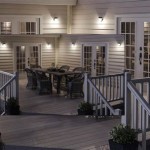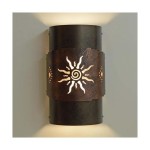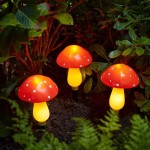How Many Lumens for an Outdoor Projector?
Determining the appropriate number of lumens for an outdoor projector is a critical step in ensuring a satisfactory viewing experience. Unlike indoor environments where ambient light is typically controlled, outdoor settings present unique challenges due to sunlight, moonlight, and artificial light sources. The brightness of a projector, measured in lumens, directly impacts the visibility and clarity of the projected image. A projector that lacks sufficient lumens will produce a washed-out and dim picture, rendering the viewing experience unsatisfactory. Therefore, understanding the factors that influence outdoor projector brightness and selecting a projector with the appropriate lumen output is essential.
Lumens, in the context of projectors, quantify the total amount of visible light emitted by the device. A higher lumen rating indicates a brighter image. However, lumens are not the only factor determining picture quality. Contrast ratio, resolution, color accuracy, and screen surface all play significant roles. Nevertheless, lumen output is the most crucial specification to consider when selecting a projector for outdoor use. Ignoring this factor can lead to significant disappointment, regardless of the projector's other features.
Understanding Ambient Light Conditions
Ambient light is the most significant obstacle to overcome when using a projector outdoors. The term "ambient light" refers to any source of light present in the viewing environment that is not the projector itself. This includes sunlight, moonlight, streetlights, porch lights, and even light emanating from nearby buildings. The intensity of ambient light varies greatly depending on the time of day, weather conditions, and the location of the viewing area.
During daylight hours, sunlight is overwhelmingly the dominant source of ambient light. Projectors intended for daytime use require significantly higher lumen outputs to compete with the sun's intensity. Under overcast conditions, the required lumen count can be reduced, but it still remains substantially higher compared to nighttime viewing. As dusk approaches, the ambient light level decreases, allowing for the use of projectors with lower lumen ratings. However, the presence of artificial light sources must still be considered.
At night, moonlight can still contribute significantly to ambient light, particularly during a full moon. Streetlights and other artificial light sources can also interfere with the projected image. The proximity of these light sources to the viewing area is a critical factor. If the projector screen is situated near a streetlight, a projector with a higher lumen output will be necessary to overcome the competing light.
Therefore, a thorough assessment of the typical ambient light conditions at the intended viewing location is crucial. This assessment should take into account the time of day, weather patterns, the phase of the moon, and the presence of any artificial light sources. This information will directly influence the required lumen output of the projector.
Lumen Recommendations Based on Usage Scenarios
General recommendations for lumen output vary depending on the intended usage scenario. These recommendations serve as a starting point, but the specific requirements may need to be adjusted based on the factors outlined above. Understanding these guidelines will help in making a well-informed purchasing decision.
For nighttime viewing in a relatively dark environment with minimal ambient light, a projector with 2,000 to 3,000 lumens can suffice. This range is suitable for smaller screens (e.g., 80 to 100 inches) and for viewing content such as movies or television shows. However, if there are nearby streetlights or other sources of artificial light, a projector with a higher lumen output, such as 3,000 to 4,000 lumens, may be necessary.
If the viewing area is subject to moderate ambient light, such as light from distant streetlights or a porch light, a projector with 3,000 to 4,500 lumens is recommended. This range provides sufficient brightness to overcome moderate levels of ambient light while maintaining a reasonably clear and vibrant image. This is suitable for medium-sized screens (100-120 inches).
For daytime or twilight viewing, or in situations where there is significant ambient light, a projector with 4,500 lumens or more is required. These projectors are designed to produce a sufficiently bright image to compete with sunlight or bright artificial light sources. They often come at a higher price point but are essential for daytime outdoor entertainment or presentations. Some projectors even feature brightness exceeding 6,000 lumens for optimal daytime performance.
Consider the size of the screen as well. A larger screen requires a brighter projector to maintain image clarity and brightness. As the screen size increases, the light emitted by the projector is spread over a larger area, reducing the perceived brightness. Therefore, for larger screens, it is recommended to choose a projector with a higher lumen output to compensate for this effect.
Factors Beyond Lumens: Screen Choice and Contrast Ratio
While lumen output is paramount, other factors contribute significantly to the overall viewing experience. The choice of screen and the projector's contrast ratio are especially important. Understanding how these elements interact with lumen output can optimize the final image quality.
The projector screen plays a crucial role in reflecting and distributing the light emitted by the projector. Different screen materials and surface coatings have varying levels of reflectivity, measured as gain. A screen with a higher gain reflects more light back towards the viewer, effectively increasing the perceived brightness of the image. However, high-gain screens can also narrow the viewing angle, meaning that the image may appear dimmer when viewed from off-axis positions. Conversely, a screen with a lower gain provides a wider viewing angle but may require a projector with a higher lumen output to achieve the desired brightness.
Consider using an ambient light rejecting (ALR) screen. These screens are specifically designed to minimize the impact of ambient light on the projected image. ALR screens feature specialized surface coatings that reflect light from the projector while absorbing or diffusing light from other sources. This effectively improves the contrast ratio and image clarity, particularly in environments with high levels of ambient light. While ALR screens can be more expensive than traditional screens, they can significantly enhance the outdoor viewing experience. This allows projectors with slightly lower lumen counts to perform more effectively in challenging ambient light environments.
Contrast ratio is another critical factor in determining image quality. Contrast ratio refers to the difference between the darkest black and the brightest white that a projector can produce. A higher contrast ratio results in a more vivid and detailed image with deeper blacks and brighter whites. Although contrast ratio is not a direct substitute for lumens, it can improve the perceived brightness and overall image quality, especially in environments with some ambient light. Projectors with higher contrast ratios tend to produce a more impactful image, even with lower lumen outputs, compared to projectors with lower contrast ratios but similar lumen ratings.
Selecting a projector with a good contrast ratio and pairing it with an appropriate screen can help to optimize the viewing experience and reduce the need for extremely high lumen outputs. While lumens are essential for overcoming ambient light, contrast ratio and screen choice contribute significantly to image quality and overall satisfaction.
In conclusion, determining the ideal lumen output for an outdoor projector involves carefully assessing the ambient light conditions, considering the intended usage scenario, and understanding the influence of screen choice and contrast ratio. By taking these factors into account, a well-informed decision can be made, ensuring a satisfying and enjoyable outdoor viewing experience.

How Many Lumens For Outdoor Mini Portable Projectors Need Benq Us

How Many Lumens Do I Need For Outdoor Projector Wemax Official

Looking For An Outdoor Daytime Projector Benq

Outdoor Projection How To Create An Cinema Personal Projector
How Many Lumens Do I Need For An Outdoor Projector Quora

How Many Lumens Are Needed For An Outdoor Projector

How Many Lumens Are Needed For An Outdoor Projector Concept With Open Air Cinema Chairs And White Projection Screen Stock Photo Adobe

How Many Lumens For Outdoor Projector Do You Need Ninja

What To Know Before Outdoor Projectors Screens Projectorscreen Com

Best Outdoor Projector To Buy For 2024 Radio Times
Related Posts







